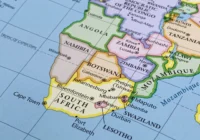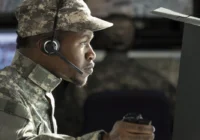Tigray, Ethiopia’s northern region, trembles on the brink of yet another conflict. It is just beginning to recover from the tragic war of 2020–2022, when it fought off the combined might of Ethiopian federal troops backed by Ethiopian ethnic militia, Eritrean forces and Somali soldiers. Tigrayans paid a heavy price, with some 600,000 dead. This time, however, the people face an even more bitter prospect: the possibility that internal strife could escalate to civil war.
Divisions within the Tigrayan ruling party, the Tigray People’s Liberation Front (TPLF), are now so deep, and the accusations being traded so vitriolic, there is a real possibility of their differences being settled on the battlefield. To many outsiders, this may come as a surprise. Tigrayans have managed to endure hardship and war for generations but have a reputation for using careful, lengthy debates to settle internal disputes.
Tigrayan fault lines
The rifts within Tigray can be traced back to how the 2022 war ended. Although the Tigrayan forces were not defeated, they only held on by their fingertips. They ran low on ammunition and were driven out of key strongholds. Eritrean troops captured areas of northern and western Tigray, while Ethiopian and Amhara forces — indigenous people of Ethiopia’s central highlands — held parts of the south.
The peace treaty signed in Pretoria and Kenya reflected the reality on the ground. The Tigrayan team handed responsibility for the security of all Tigray over to the Ethiopian army, and required its troops to surrender their heavy weapons and disband. Politician Getachew Reda, the Tigrayan team leader, went on to head the Tigray Interim Regional Administration (TIRA). After such a bloody conflict, the peace agreement proved a bitter pill for Tigrayans to swallow. The agreement inevitably caused differences within the TPLF.
At the TPLF’s core was the Marxist–Leninist League of Tigray. Though authorities said it was dissolved in 1991, few citizens believed it really was. The TPLF old-guard grew up with its principles of democratic centralism, which required all members to accept, without question, the decisions of the organization’s ruling body. Under the strain of divisions over the peace treaty and the outcome of the war party, unity is severely strained and the rifts are now public.
Two factions have emerged. Debretsion Gebremichael, chairman of the TPLF, leads one side while Getachew and those involved in the TIRA lead the other. Author Gerrit Kurtz outlines the background to this clash in the publication African Arguments:
“Long-simmering tensions within the Tigray People’s Liberation Front (TPLF) broke out into the open in August 2024. The party leadership around President Debretsion Gebremichael now stands apart from key TPLF officials in the Tigray Interim Regional Administration (TIRA) around its President Getachew Reda. Each side considers the other an illegal entity. The division has stirred up fears of renewed violence in northern Ethiopia. The split occurs in a context in which the economic and social situation in the northern highlands remains dire, the legacy of the devastating war four years ago that was only stopped by the Cessation of Hostilities Agreement signed in Pretoria, South Africa, in November 2022. … At the same time, it is unclear how much support the TPLF still commands among the population at large in Tigray. Last year, the TIRA clamped down violently on an opposition rally in Mekelle. As a legacy of the war, many people are traumatised and focus on their own survival, especially the almost 900,000 internally displaced persons (out of a pre-war population of around six million). Tens of thousands of young people are leaving Tigray each year in search of better livelihoods, according to the TIRA. Others become criminals.”
As Kurtz concluded in his October 2024 article, “the status quo is untenable.” This has proved accurate. Both Debretsion and Getachew’s factions have released statements attacking each other — unheard-of behavior in the ruling party. Both now attempt to win over public opinion in Tigray and the support of Tigray’s troops and officers. TIRA and the TPLF leadership have done this in Tigrinya.
Major divisions threaten rehabilitation
Here are some of the issues that divide the factions:
- Debretsion’s faction tends to originate from northern Tigray and represents the party’s old-guard. Getachew is from the south and has more support in Tigray’s regional capital, Mekelle, as well as from younger technocrats.
- Senior military officials have become embroiled in a lucrative gold trade sold via Eritrea and Sudan. This trade undermines unity and encourages corruption.
- Substantial quantities of aid from the United States and other donors were diverted and sold on the open market. As a result, the United States Agency for International Development and the World Food Programme paused their assistance for several months in 2023.
- The TPLF leadership believed Getachew is too close to Ethiopian Prime Minister Abiy Ahmed. Debretsion is seen as having made his peace with neighboring Eritrea, a former enemy that still holds areas of Tigray.
- Senior members of the TPLF are determined to have federal authorities continue officially recognizing their party. This may seem like a technical issue, but it is considerably resonant. The party has valuable assets in Ethiopia’s capital, Addis Ababa, and beyond that could be forfeited.
These differences come as Tigrayans struggle to overcome the aftermath of the 2020–2022 war. Hundreds of thousands remain displaced from their homes and in serious hardship. As news organization Deutche Welle reported from Tigray, “Tigray’s regional interim administration has announced plans to facilitate the return of displaced people. However, the plan is estimated to require $2.1 billion and the political will to return the displaced people.” Any form of internal conflict, let alone a civil war, would put this rehabilitation at risk.
[Lee Thompson-Kolar edited this piece.]
The views expressed in this article are the author’s own and do not necessarily reflect Fair Observer’s editorial policy.
Support Fair Observer
We rely on your support for our independence, diversity and quality.
For more than 10 years, Fair Observer has been free, fair and independent. No billionaire owns us, no advertisers control us. We are a reader-supported nonprofit. Unlike many other publications, we keep our content free for readers regardless of where they live or whether they can afford to pay. We have no paywalls and no ads.
In the post-truth era of fake news, echo chambers and filter bubbles, we publish a plurality of perspectives from around the world. Anyone can publish with us, but everyone goes through a rigorous editorial process. So, you get fact-checked, well-reasoned content instead of noise.
We publish 2,500+ voices from 90+ countries. We also conduct education and training programs
on subjects ranging from digital media and journalism to writing and critical thinking. This
doesn’t come cheap. Servers, editors, trainers and web developers cost
money.
Please consider supporting us on a regular basis as a recurring donor or a
sustaining member.
Will you support FO’s journalism?
We rely on your support for our independence, diversity and quality.










Comment